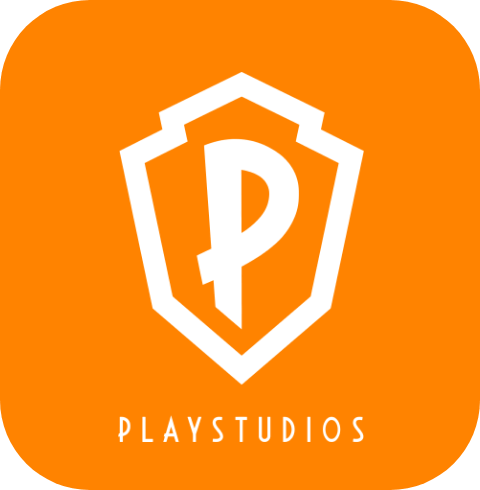Ravid Sela
Ad Monetization Lead


Meet Ravid Sela, Ad Monetization Lead at Playstudios. She oversees ad strategies for games like Tetris and social casino titles, ensuring ads blend seamlessly into gameplay while maximizing revenue. A data-driven expert, Ravid is passionate about balancing user experience with monetization and optimizing performance with long-term testing and BI insights.
How would you describe the types of games that Playstudios makes to a new player?
Playstudios creates a wide range of games, including social casino games like slots and card games like solitaire, spider solitaire, and more. We’re also the studio behind Tetris and Tetris Block Puzzle. The common thread across our game portfolio is our loyalty program, where you earn loyalty points for playing our games that you can redeem for real-life rewards.
What does your typical day look like at Playstudios?
My day starts with running reports on the previous day’s or weekend’s performance, analyzing trends, and taking action based on the data.
After that, I focus on our Tetris games. My role is to ensure we’re monetizing our games with ads in a way that provides the best experience for both the players and our team. I work on feature proposals with product managers, draft specs for the tech team, and explore various monetization options. My work is also anchored by data, but I have the freedom to explore and experiment.
What advice do you have for balancing user experience and ad monetization, especially in free-to-play mobile games?
We’re not naive. We know ads can create friction for users, so it’s important to introduce them carefully. Your ad monetization strategy should be data-driven and rely on long-term trends, not just a snapshot of one or two user cohorts.
When balancing monetization, or ARPI (average revenue per install), with the user experience, it’s crucial to test across a broad range of installs over time. You should then compare your results against a control group to validate your hypotheses for things like ad frequency, ad placement, or any other aspect of your ads.
My tip: Don’t base your decisions on one week of data or ARPDAU (average revenue per daily active user) data. Again, look at installs over a long period. When you do so, you’ll see the retention trend in your data, allowing you to analyze how users respond to changes.
You’re the solo ad monetization pro at Playstudios. What hard-won advice can you share with others in a similar situation?
Having a solid BI (business intelligence) infrastructure is a huge relief point. You’re set up for success if you have correctly implemented BI in your game. I’m data-driven and look to the data to guide my decision-making. It’s hard work initially, but once your BI is reliable, it feeds into everything you do, especially A/B testing.
If you don’t have robust BI, everything becomes much more challenging. But if you can access your dashboards and SQL data and don’t need to rely on others to pull data, you can make decisions faster and more intelligently.
Can you elaborate on how data influences ad monetization at Playstudios?
We’re super data-driven. We don’t rely on hunches. We test everything before deploying it to 100% of users. We ensure all metrics are available in a single dashboard to see how any new feature we’re testing impacts the game. We lean on data. We don’t just rely on it.
What are the key advantages of fully integrating the ad monetization function into the product team?
As time passes, it’s been a eureka moment to realize how crucial it is for the ad monetization function to be immersed in the product team. So many variables impact monetization, and being part of the product team lets me stay informed about everything incorporated into our games that could impact ad monetization, such as feature tests and feature releases. And you can see the tells in the data that you wouldn’t have noticed before because you didn’t have the full context. That way, I can contribute more strategically and align our goals.
How do you identify the best moments to integrate ads in your games?
It’s a mix of personal experience from playing many games and industry trends. I’m a gamer, so I pay attention to natural break points in games, moments where ads feel like a seamless part of the game experience rather than an interruption.
What work challenges or concerns keep you up at night?
1. Ad quality – Ad quality is a constant struggle because some demand partners may prioritize their engagement over the quality of the ad experience, which can harm the user experience in our games. As a result, ad publishers and demand partners have differing views about the level of ad quality that publishers consider harmful and demand partners consider successful.
It’s been a cat-and-mouse game lately. Demand partners try to push the envelope of ad quality, and we catch them and ask our partners to abide by our boundaries. But playing these games isn’t sustainable. Publishers and demand partners may need to develop an industry standard for ad quality similar to the industry standards for ad privacy.
2. Bidding-only ad monetization – Bidding has many benefits over the waterfall setup. But when you consider it, you, as the publisher, will understand that you’re losing control over the auction. The demand partners are also losing some control because the mediation platforms hold all of the power in bidding-only auctions. I’m not too worried about the current power dynamics in ad monetization, but I know it’s necessary for the industry to find a solution.
What would you predict for the future of mobile ad monetization?
With waterfall optimization off the table, ad monetization pros will have more time to think creatively. I’m also eager to see how AI impacts the ad monetization field—whether through segmentation, creative development, security, or something else entirely.
2025 will be the year of opportunity for ad monetization pros because we now have many tools to utilize and be more creative.
What resources—websites, blogs, podcasts—do you use to keep up with mobile ad monetization?
I play a lot of games, follow podcasts like Two and a Half Gamers, and network a lot—which I love. Having one-on-one chats with fellow publishers is priceless for staying in the loop—people don’t mention this enough.




